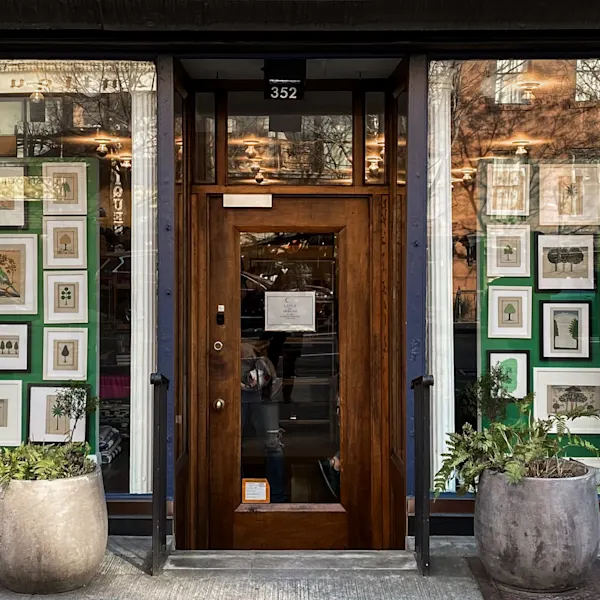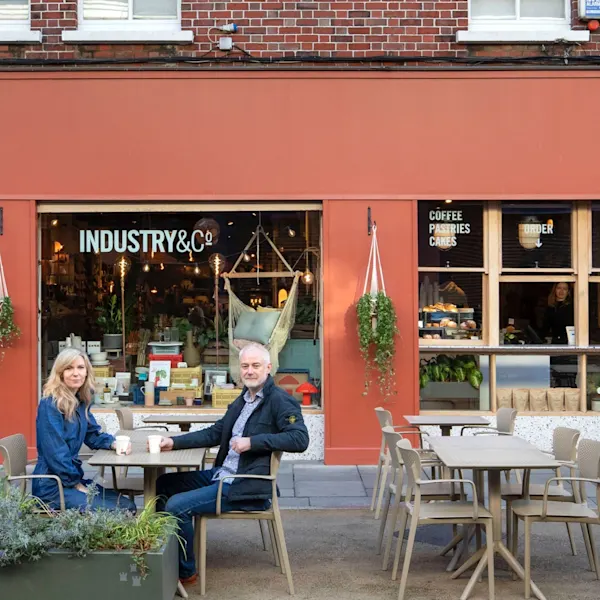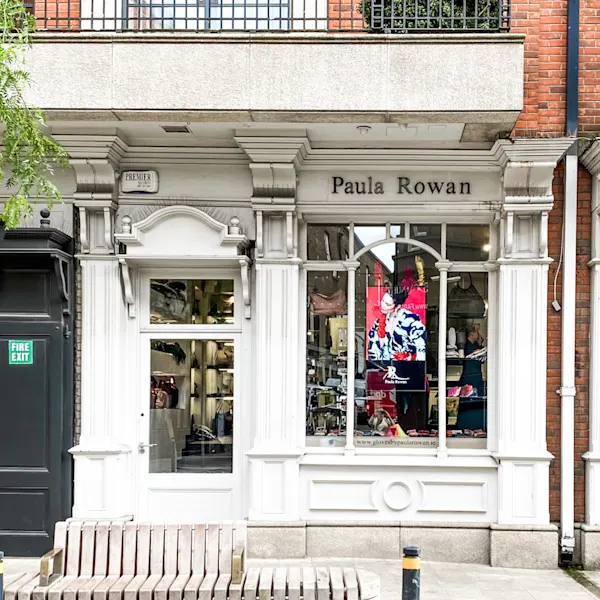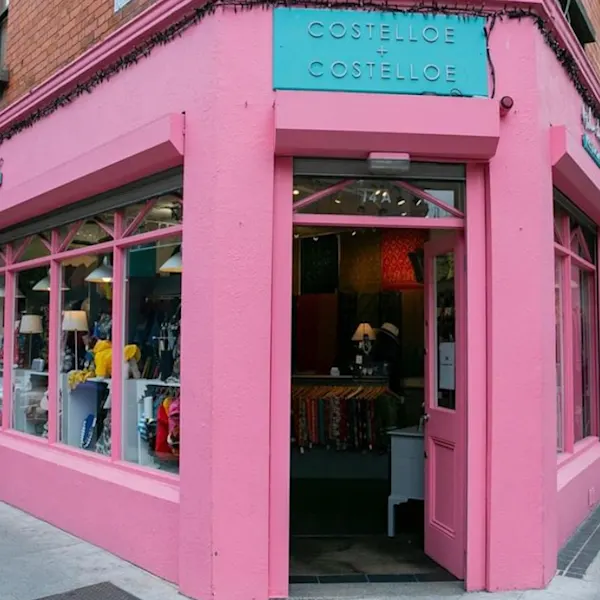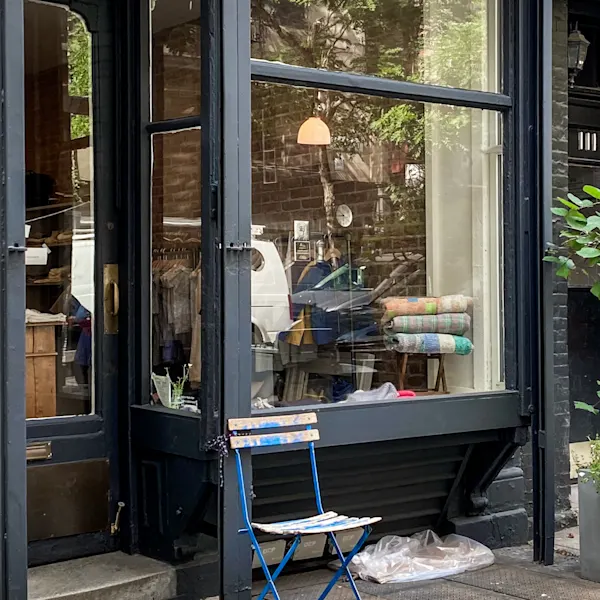
Lindquist
Rumford Studio Studio Philipsdale Landing, RI 02916, USA
- Naturally-dyed leather goods
- Each piece is embossed with the maker's symbol
- Studio visits by appointment
WHAT WE LOVE
Leather bags and accessories handmade in a beautiful studio in Rhode Island. Each piece is created with great attention to all the details, from the naturally dyed leather, hardware and trim choices, to the debossed edition number and the artisan maker’s initial.
Founded in 2020 by husband and wife team, Lindy McDonough, who is also the creative director, and Conor MacKean. The leather studio is housed in a former industrial workspace with soaring double-height ceilings and views of the Seekonk River. Located in Philipsdale Landing in East Providence, Rhode Island, the studio does double duty as a workroom and showroom open to the public by appointment.
"Offer something in your shop that you can’t get anywhere else."

THE SHOP
What year was Lindquist established? We officially opened our doors in October of 2020. We spent four months setting up the studio, sourcing and testing materials and refining our construction and process before we launched our brand and website.
What makes Lindquist goods so unique? We design and produce all of our leather goods in house at our beautiful studio in Providence, Rhode Island. We use exclusively vegetable tanned, naturally dyed leather and take great care in sourcing all the finishing details, from thread to hardware.
In the midst of a world in a rush, we are committed to thinking broadly, ethically, and generationally. Every object from our studio is characterized by the timelessness and collaborative spirit of artisan craft.
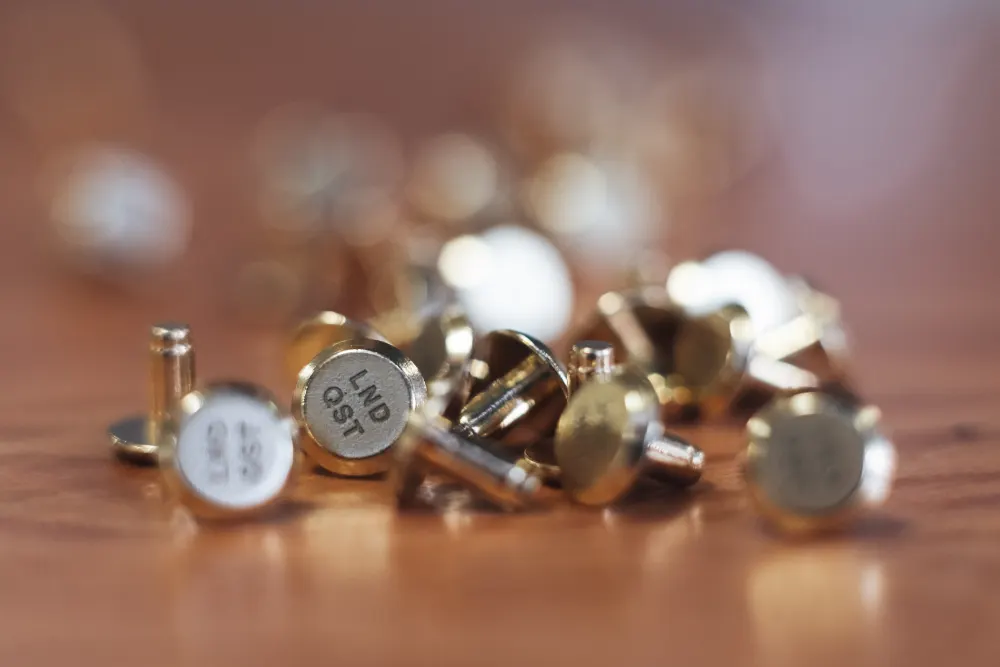
Where are Lindquist goods made? We pride ourselves on making the finest leather goods possible, all in house, by hand, at our studio in Rhode Island. At Lindquist we understand that to make things that will last, we need to work with materials that age with grace, hence our decision to use only leather that is fully vegetable-tanned using all natural tannins. We collaborate closely with our tannery partner to create exciting colors and unique finishes using natural dyes and processes.
We straddle an interesting line between very traditional construction methods and technology, as we invested in a CNC cutting machine to help make our production as efficient and nimble as possible and minimize waste. We know that natural resources are precious, and we are committed to producing and consuming in a sustainable way.
What are the challenges selling online compared to a physical store? The most challenging element of online sales is trying to evoke the touch, feel, and even smell of our leather objects. The craftsmanship and beauty of our objects is sometimes difficult to convey online. But when people have the opportunity to step into our physical space, to hold the objects in their hands and see where they were made, there is an immediate appreciation for the time and care that has been put into each piece.
What are the advantages of selling online? The ability to reach customers worldwide is obviously a great advantage to having an online store. We also love the storytelling aspect of our lookbooks, and finding creative ways to introduce ourselves and our ethos to the world without meeting in person has been an exciting challenge.
Who are your customers? We strive to make objects that are gender neutral and inclusive from sizing to construction, and we feel so fortunate to have a diverse customer base across many ages and identities. We are drawn to and design for people who are driven by their own innate sense of individual style.
How has the pandemic impacted your business? We started this project in the middle of the pandemic, so to some extent it is all that we’ve known as a business. But having been in the industry for over a decade, we have a good idea of how much the landscape has changed. Not being able to have many customers into the shop or do open houses has forced us to focus on how best to tell our story, and to work with our photographers to present the bags as best we can.
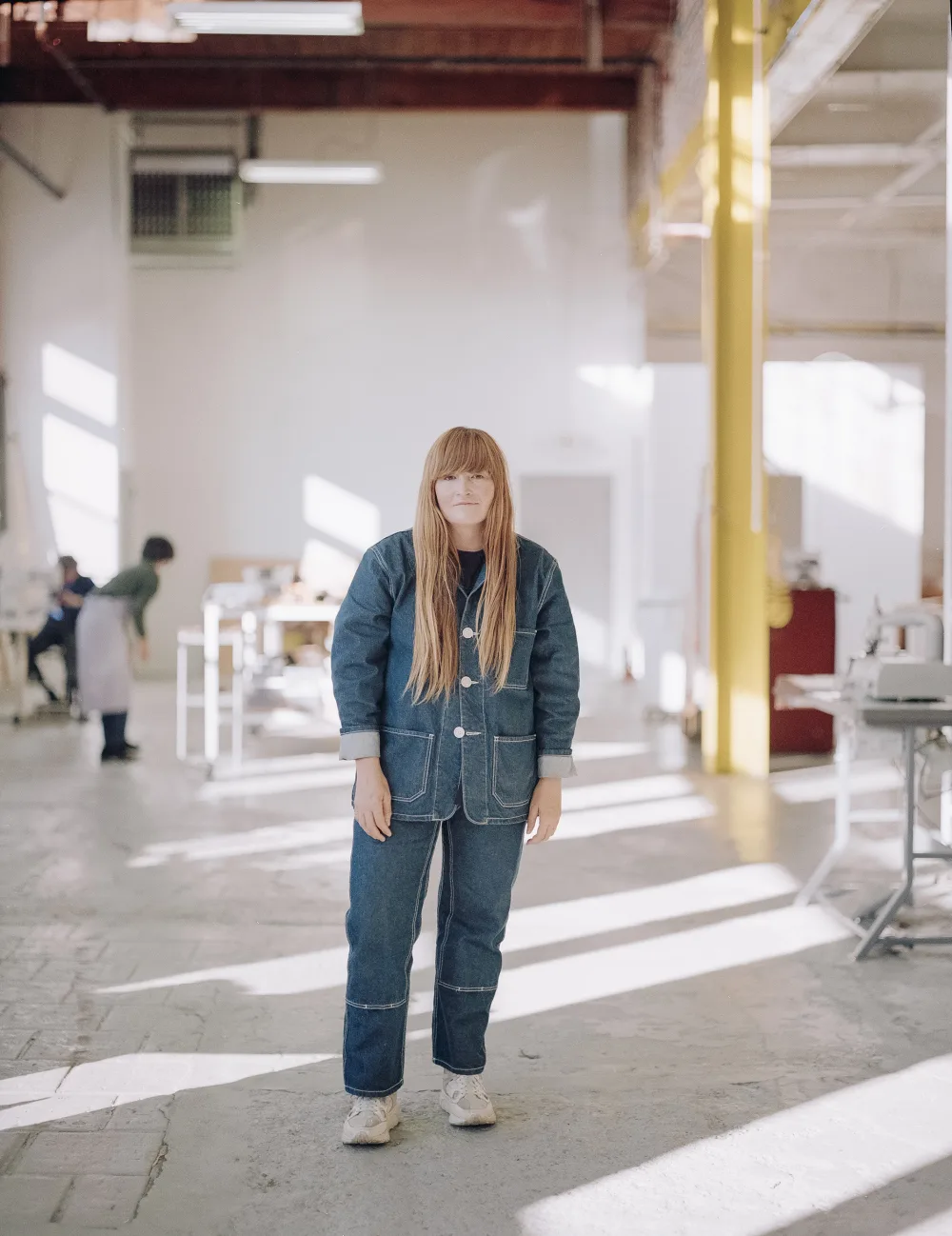
THE SHOPKEEPER
Lindy McDonough, creative director and co-founder of Lindquist.
Who inspires you? Women artists. I often think about people when I am sketching, either a close friend or an artist I admire, and many of the pieces in our collection are inspired by the artists whose work I find compelling and transformative (Eva Hesse, Christina Ramberg, Pauline Oliveros).
In particular I always come back to Charlotte Perriand, the brilliant French architect and furniture designer who worked in Le Corbusier’s studio at a time when there were not many women admitted to that sphere. There are relatively few female leather manufacturers, but our studio is run by and predominantly populated by women (amazing, talented, powerful women I should add!). Not only do I admire Perriand’s work as a model for the staying power of thoughtful design, but her position and success in a male dominated industry is a constant inspiration for me personally.
What inspires you? We cite the Swedish concept of Lagom as inspiration for our line: items that are in balance, in moderation: perfect-simple . Each Lindquist piece reflects the work of artists inspired by this ethos.
We want to make objects that are thoughtful and considered but a bit unexpected, that transcend trends. Lindquist objects will improve and become more beautiful with age and use, those favorite patinated pieces you want to wear everyday and pass on to the next generation. We quietly nerd out about the details of each piece and attempt to invert certain staid design conventions and assumptions. We’re trying to create objects with an aura.
Before I was a shopkeeper, I…. learned the importance of constructive critique. My parents were both entrepreneurs in the outdoor apparel industry, and our dinner conversations when I was growing up centered on how well things were made: Was this down packed correctly? Are there bar tacks on this zipper? I have always loved to design objects, but I am much more interested in having a studio practice and considering all aspects of production rather than being exclusively a designer. Hence our focus at Lindquist on making all of our objects in house to be sure that we maintain the highest quality standards.
I went to the Rhode Island School of Design and studied Industrial Design with a focus on soft sculpture, and have been designing and making leather objects since my time at RISD. I had a quick stint as a sneaker designer for Adidas/Reebok as my first job out of school, and then moved to New York to work for Jen Mankins at the Bird Boutiques in Brooklyn. I pivoted in 2010 to work as the co-founder and creative director of Lotuff Leather in Providence, RI.
The hardest lesson learned in starting a business? To start a business requires both organization and flexibility. You have to plan plan plan and then you have to let go of the plan and understand that your business may need to adapt and evolve organically.
The best lesson you have learned opening a shop? Surround yourself with really great people, trust them, engage their talents, build it like a family.
Your advice for anyone wanting to open an online shop? Find an amazing photographer who will listen to you but also brings a unique point of view. Offer something in your shop that you can’t get anywhere else.
If you weren’t a shopkeeper you would be..? An architect or architectural designer or furniture designer. But I tell everyone they should be a photographer. Honestly I probably should have been a plastic surgeon.
What are your favorite shops? Merci , Paris; Judith , Portland ME; Mohawk General Store , Los Angeles CA; Du Pain et Des Idees , Paris; Officine Universelle Buly , Paris; and Formaggio Kitchen , Cambridge.
What are your favorite Instagram accounts? Stella Bugbee @ stellabugbee , Atwaun Sargent @ sirsargent , Julie O’Rourke @ rudyjude , Ryan Lopes @ rylopes , Bode @ bode
I wish I could… Build an epic summer camp on an island.
ON THE FUTURE OF RETAIL
“There will always be a place for retail if you have something unique to say and something special to offer and you can create community within your space. “
